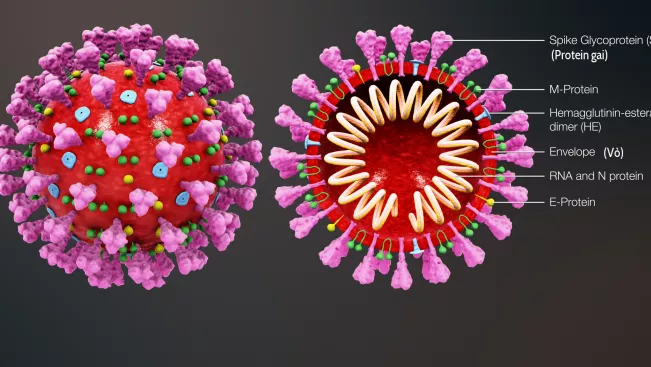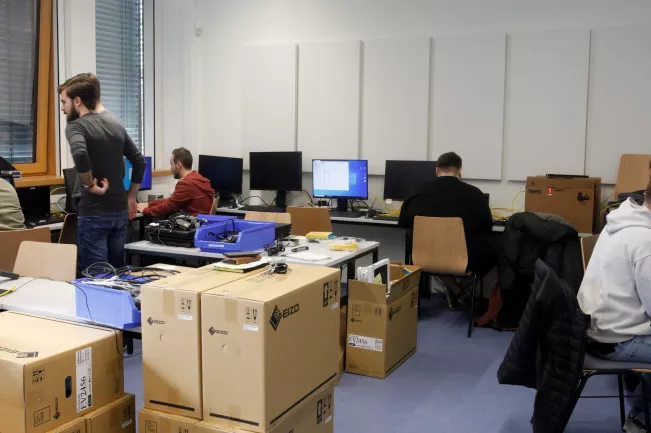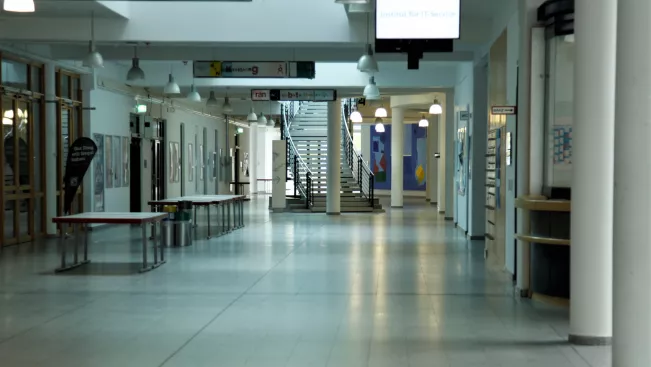Communications and Marketing
The "Coronomester" in retrospect with a brief preview

"Although it worked better than we'd thought it would, overall it was very stressful and impersonal." This was the feeling gleaned from a non-representative survey of professors and teachers for special tasks at H-BRS. Respondents also said that preparing courses and supporting students took up much more time. Although teachers feel ready for the winter semester, they would like to see as much in-person teaching as possible, explicitly for the sake of the students.
From a functional perspective, courses ran surprisingly smoothly during the "coronomester", as the summer semester has been called, partly in jest. Teachers reported that more students called into the early lectures than would normally attend in person, although numbers fell as the semester went on. It was suggested that this could have had something to do with the measures imposed by the authorities to protect against the coronavirus: whereas there had been virtually nothing to distract students from their books during lockdown, they had a few more opportunities to do something else with their free time as measures eased.

Organising so-called asynchronous courses takes a lot more effort than delivering teaching in person. Amongst other things, "asynchronous" means preparing recordings, producing teaching videos and planning virtual meetings, exercises or practicals. The digital format also requires a different approach to teaching – ideally a "flipped classroom" format, in which students start by learning new content themselves and then discuss it with their lecturer in a group. Videoconferencing systems were provided to talk directly with students, while live lectures could be delivered "from the kitchen table". These were generally very efficient, with the necessary technology hardly ever causing a problem. "The IT had to supply us with solutions overnight and really went beyond the call of duty," came the fulsome praise.
Nevertheless, a few professors discovered that a lot of additional e-mail communication was still required after each event to mop up all the questions, particularly in technical subjects.
Producing a teaching video quickly takes up one to two days' work. Courses on the LEA learning platform have to be updated, any student work uploaded there has to be marked, one-to-one videoconferences have to be held, and e-mails and questions on the course forums have to be answered. All this is time well spent, however, as teaching has to be adapted to the respective digital medium – otherwise good teaching can quickly become bad teaching. "We’ll undoubtedly benefit in the long term from the content we’ve produced digitally, which students will be able to use in the future too to help them prepare and practise," explains Iris Groß, the Vice President responsible for teaching and learning. Resources for media didactics are therefore essential, she thinks.
Even though everything went swimmingly on the technical side, something crucial was still missing: direct contact with the students, especially since many of them had their audio and video turned off during events. There was a lack of direct feedback, clearly discernible reactions and questions. A few of the teachers felt like radio presenters. Recently, a video clip from the Department of Natural Sciences put it in a nutshell: "We're missing you!" came the message to the students.

Missing the direct contact
Despite the successful teaching and learning, it was a bleak semester for most. There was none of the happiness that comes from togetherness; students were simply being spoken TO, not spoken WITH, it was felt. In person, a lecturer can address the students better and really engage with them. If you cannot see their faces when you are teaching, however, you cannot tell what they need or how much they understand. It's harder to get discussions started via videoconference. As far as other interactions are concerned, teachers’ experiences vary extremely widely: reports range from "consumerism" to "very active participation via the chat feature" and "lively debates (digitally) in small groups within the event". Online teaching also received regular “thumbs up”, according to the survey, maybe because a special guest had been involved, because a games-based learning platform had been integrated or, in particular, because the students appreciated how and to what extent teaching was keeping on going.
The upcoming winter semester is likely to contain both elements, in-person teaching in smaller groups alongside digital formats. The sceptical attitude that a few people had held towards digital teaching resources has given way to greater openness. Most have now mastered the tools of the trade, and professors have excelled themselves. Last semester, the more creative aspects of lesson design had to take a back seat as teaching was forced to transform itself quickly and radically due to the rapid emergence of the coronavirus restrictions. Now, however, lessons are being refined and enhanced. This work can build on the experiences gained during the summer semester, as the survey made clear.